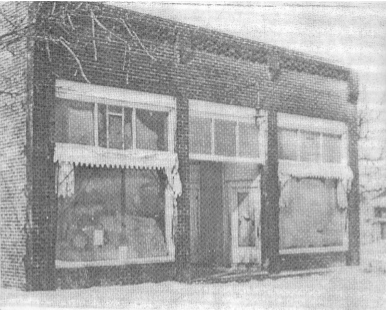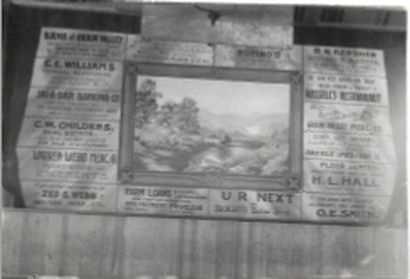|
|
by Marcia Napier, Grain Valley Historical Society Recently at the Historical Society, we welcomed the American Literature classes from Grain Valley High School to the museum. The students visited after studying “Our Town,” written by the famous American writer and playwright Thornton Wilder. His play takes place between 1901 and 1913 in Grover’s Corner, a fictional town based on a real place, Peterborough, New Hampshire. At the Historical Society our goal is to introduce the students to their town —Grain Valley. Because “Our Town” is a play, I’ve spent some time compiling information about Grain Valley’s first theater. The Royal Playhouse, as it was called, was built by Jasper Newton “Newt” Sanders in 1910, during the era of “Our Town” in Grover’s Corner. Mr. Sanders came to Grain Valley from Kentucky and married a local girl, Anne Lee Herrington. Newt became a successful farmer, inventor and entrepreneur. He, along with his brother-in-laws, David C. Herrington, patented a cane mill used by many farmers in the area. Profits from farming and the cane mill allowed him to build the Playhouse. He also built three houses, one for each of his daughters, on the north side of today’s Walnut Street between Capelle and Gregg. In 1910, the front entrance to the Playhouse was on Walnut Street, today’s Main Street. I cannot determine when the street names changed. The entrance consisted of three doors. The door on the left opened into a chili parlor, and the one on the right opened into a mercantile. The center door opened into a hallway leading to the main portion of the building that served numerous functions as the social center of Grain Valley for many years. At the end of the hall was a counter where skates were rented on Saturday nights. On Friday nights they would put out the folding chairs for the silent movies where someone played the piano, usually my Aunt Opal Fristoe. Later talking pictures were featured on Friday nights. Before the first brick school burned in 1925, high school baseball games were played there. The “new school” had a gymnasium. My parents remembered dances held there in the 1930’s. It was during prohibition and there was sometimes a ruckus! Goldie (Russell) Montgomery, a teacher at the high school, taught the girls in her class the Charleston, and they performed on stage at the west end of the building, The building was sometimes referred to as the “opera” house, but no operas were performed there. There were occasionally operettas or plays, usually directed by my great Aunt Ruth (Sanders) Belford. Many of the cousins, along with other local people, played the parts. I do not know the exact date of the closing of the Playhouse, but my great-grandfather, Newt, died in 1941. Ray “Pop” Frantz operated a gasoline station there in the 1940s, and in the 1950s and 60s, Fred Roberts used the building and adjoining lot a salvage yard for WW II planes, tanks, jeeps and other war surplus vehicles. The Grain Valley Historical Society Museum is located at 510 Main Street. Visit the Historical Society’s website, www.grainvalleyhistory.com, and follow the Society on Facebook, Twitter, and Instagram (@grainvalleyhistory). Top photo: The Royal Playhouse, Grain Valley’s first theater. Bottom photo: The stage curtain at The Royal Playhouse was actually a drop with a painting, perhaps of Sni Creek with Monkey Mountain in the background, and surrounded with advertisement from local businesses.
Comments are closed.
|
Categories
All
Archives
July 2024
|
Grain Valley NewsGrain Valley News is a free community news source published weekly online. |
Contact Us |



 RSS Feed
RSS Feed
